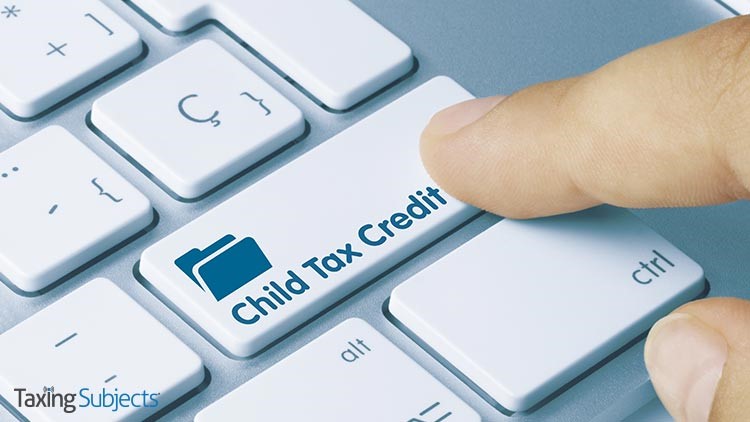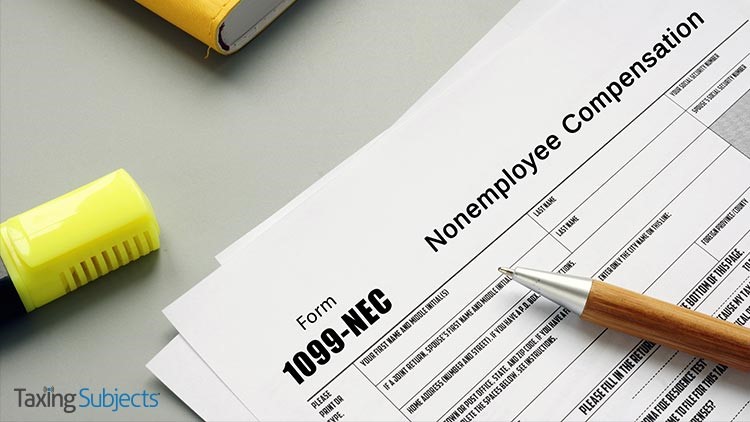by | Jul 1, 2021 | Tax Tips and News
Taxpayers who aren’t required to file a federal income tax return don’t need to file to get advance payments of the Child Tax Credit. They will, however, have to register with the IRS if they haven’t filed a return lately.
Registering through the IRS Non-Filer Sign-up Tool is an easy way for these taxpayers to provide the information the IRS needs to calculate and send out the advance CTC payments. The information, such as name, address and Social Security numbers, provides the IRS with the basic data to get the monthly credit payments set up.
The targeted taxpayers and families have little or no income, and include the homeless. Generally, they just don’t have enough income to file a return. And that’s where the IRS’ tool comes in.
The Non-Filer Sign-up Tool is for people who didn’t file a tax return for either 2019 or 2020 and have not used the tool previously to claim Economic Impact Payments (EIPs). The free tool provides individuals with a way to relay to the IRS the required information on themselves, their children and other dependents as well as their direct deposit information so the advance credit payments can go straight into their bank account.
Eligible families who already filed a 2019 or 2020 return—or expect to file one—should not use the Non-Filer Sign-up Tool. Once their return is processed, the IRS will automatically check their eligibility and calculate the credit. The advance payments will then be issued.
Those who want to claim other tax benefits, such as the earned income tax credit, also should not use the Non-Filer Sign-up Tool. They should instead simply file a regular tax return.
The Advance Child Tax Credit
The American Rescue Plan Act, which became law in March of this year, made the CTC possible in its present form. The legislation expanded the credit and made it payable in advance installments.
The Child Tax Credit is normally calculated using the taxpayer’s 2020 return. If the 2020 tax return hasn’t been filed or is still being processed, the 2019 return is used to calculate the initial payment. In lieu of a 2019 return, the information that available in 2020 and entered with the Non-Filer Tool can be used.
Advance payments will be up to $300 per month per child under age 6, and up to $250 per month per child aged 6 – 17.
If banking information has been provided by the taxpayer, the IRS will send the advance payments by direct deposit. Otherwise, the advance payments will be via paper check in the mail. Payment dates are: July 15, August 13, September 15, October 15, November 15, and December 15.
For more information and other helpful resources, see Advance Child Tax Credit Payments in 2012 on IRS.gov, and FAQs on the 2021 Child Tax Credit and Advance Child Tax Credit Payments.
Source: People who don’t have to file taxes may need to register for monthly advance child tax credit payments.
– Story provided by TaxingSubjects.com
by | Jul 1, 2021 | Tax Tips and News
The Internal Revenue Service has rolled out a new online tool that’s built to help families register for monthly Advance Child Tax Credit payments. The tool is tailored to the needs of families who are eligible for the advance payments, but don’t normally file an income tax return.
The Non-Filer Sign-Up tool, though, does more than just register taxpayers for the CTC payments. It can also help these taxpayers register for the third round of Economic Impact Payments or claim the Recovery Rebate Credit for any of the first two rounds of EIPs they may have missed.
The challenge for the IRS is to get eligible individuals who don’t normally make enough income to file a yearly tax return to give their information to the agency so they can actually receive the CTC advance payments. The IRS needs the basic information—such as name, address, Social Security numbers and information on dependents—to figure and issue the CTC advances.
IRS Commissioner Chuck Rettig says many times, these individuals and families may have little or no income; they may even be experiencing homelessness, or be a part of another underserved group.
“We have been working hard to begin delivering the monthly Advance Child Tax Credit to millions of families with children in July,” said Commissioner Rettig. “This new tool will help more people easily gain access to this important credit as well as help people who don’t normally file a tax return obtain an Economic Impact Payment. We encourage people to review the details about this important new effort.”
No action needed by most eligible taxpayers
The new tool should not be used by families who’ve already filed—or plan to file—2019 or 2020 income tax returns. Also, those who want to claim other tax credits, such as the Earned Income Tax Credit (EITC) for low- and moderate-income families, shouldn’t use the online tool, but should file a regular tax return instead.
The IRS also reminds that there are scams related to the Advance Child Tax Credit payments and Economic Impact Payments. The only way to get either of these payments is to either file a tax return with the IRS, or to register online using the Non-Filer Sign-Up tool. It is available only on IRS.gov. Any other option is a scam.
For more information on the Advance Child Tax Credit payments, check out our Taxing Subjects blog.
More tools are on the way
The IRS says it will update its Advance Child Tax Credit 2021 page in the coming weeks with some new tools, including:
- An interactive Child Tax Credit eligibility assistant to help families determine whether they qualify for the Advance Child Tax Credit payments.
- Another tool, the Child Tax Credit Update Portal, will initially enable anyone who has been determined to be eligible for advance payments to see that they are eligible and unenroll or opt out of the advance payment program. Later, it will allow people to check on the status of their payments, make updates to their information and be available in Spanish.
Source: IRS unveils online tool to help low-income families register for monthly Child Tax Credit payments.
– Story provided by TaxingSubjects.com
by | Jul 1, 2021 | Tax Tips and News
Most times, businesses pay their employees for the work they do, and set aside a portion of those wages to in turn, pay Uncle Sam. But what if the business has to pay someone who isn’t technically an employee?
Enter nonemployee compensation.
Form 1099-NEC, Nonemployee Compensation, is used to help collect taxes from those who get paid for services to a company or nonprofit organization while not being a full employee.
The law demands that anyone who earns $600 or more in nonemployee compensation in a year has to report the payments using Form 1099-NEC.
The deadline for filing Form 1099-NEC is Jan.31. For 2021 returns, there is no automatic 30-day extension of time to file. However, hardship cases may be able to qualify for an extension.
The IRS says a Form 1099-NEC has to be issued for each person that a business or nonprofit group paid for:
- Services performed by someone who is not their employee (including parts and materials);
- Cash payments for fish (or other aquatic life) they purchased from anyone engaged in the trade or business of catching fish; or
- Payments to an attorney.
Some specific kinds of payments don’t have to be listed on the Form 1099-NEC. For a full list, see the Instructions for Forms 1099-MISC and 1099-NEC on the IRS website.
Backup Withholding
If a person due nonemployee compensation hasn’t supplied the payer with a Taxpayer Identification Number (TIN), or if the IRS says the payee’s TIN doesn’t match their records, backup withholding may be necessary.
A valid TIN can be a Social Security number; employer identification, individual taxpayer identification or adoption taxpayer identification.
Backup withholding may apply to most kinds of payments that are reported on Form W-2G and the various Forms 1099. It is defined as the taxpayer’s requirement to withhold a certain percentage of tax from income not otherwise subject to withholding.
The person or business paying the taxpayer doesn’t generally withhold taxes from some kind of payments, yet there are cases when the payer is required to withhold a percentage of tax due the IRS.
At present, the current backup withholding tax rate is 24%.
For more information see the Instructions for Forms 1099-MISC and 1099-NEC; the General Instructions for Certain Information Returns; or Publication 15, Employer’s Tax Guide (Circular E).
Sources: Businesses must report nonemployee compensation and backup withholding; Instructions for Forms 1099-MISC and 1099-NEC.
– Story provided by TaxingSubjects.com
by | Jul 1, 2021 | Tax Tips and News
The Internal Revenue Service has unveiled a pair of new tools to help families manage and monitor advance monthly payments of the Child Tax Credit, made possible by the American Rescue Plan.
The new tools join the Non-Filer Sign-up Tool that helps families who aren’t normally required to file an income tax return to file a return and register for the Child Tax Credit.
The Child Tax Credit Eligibility Assistant allows families to determine if they qualify for the advance credit just by answering some questions.
The Child Tax Credit Update Portal can verify taxpayers are eligible for the advance CTC payments. This tool can also be used to unenroll taxpayers from the advance payments if they choose, so they can get a lump sum when they file a tax return next year.
All families need to access the password-protected Portal is internet access and a computer or smartphone.
The Child Tax Credit Eligibility Assistant and the Child Tax Credit Update Portal are both available now on IRS.gov.
“IRS employees continue to work hard to help people receive this important credit,” IRS Commissioner Chuck Rettig said. “The Update Portal is a key piece among the three new tools now available on IRS.gov to help families understand, register for and monitor these payments. We will be working across the nation with partner groups to share information and help eligible people receive the advance payments.”
More features are on the way
A number of updates and upgrades are scheduled for the Child Tax Credit Update Portal by the IRS. Families will soon be able to use the portal to check the status of their payments. Later this month, the IRS expects taxpayers to be able to update bank account information for advance CTC payments. Next month, an upgrade is planned that will let taxpayers change their mailing address.
In late summer and fall, taxpayers should be able to use the Portal to update their family status and changes in income. More on these improvements can be found on the tool’s FAQs on IRS.gov.
Ahead of all the upgrades, though, the initial version of the Portal and its unenrollment feature are worthy of the spotlight.
Some families might prefer to wait until the end of the year and get the full credit amount as a tax refund from their 2021 return, instead of getting the advance payments. The Portal gives these taxpayers an easy way to opt out of the monthly CTC payments.
Unenrollment might also help those families that no longer qualify for the Child Tax Credit – or think they won’t qualify when they file a 2021 tax return.
There are three main ways this could happen:
- Their income in 2021 is too high to qualify them for the credit.
- Someone else (an ex-spouse or another family member, for example) qualifies to claim their child or children as dependents in 2021.
- Their main home was outside of the United States for more than half of 2021.
ID verification required for portal access
Users who want to access the Child Tax Credit Portal first have to verify their identity. Those without an existing IRS account will have to verify their identity with a kind of photo identification that uses ID.me, a trusted third-party vendor for the IRS. This important security check will keep taxpayers’ accounts secure and shielded from identity theft.
Users who have an existing IRS username or an ID.me account can use those credentials to sign in, without creating a new account.
Taxpayers without internet access or who otherwise can’t use the online tool to unenroll should contact the IRS using the telephone number included in their IRS outreach letter.
Check eligibility first
The first stop for taxpayers and their families should be the Child Tax Credit Eligibility Assistant. Here, families can see if they are qualified for the Child Tax Credit and its advance payments.
This simple tool uses a series of questions to determine if the taxpayer qualifies.
It should be noted that this is merely an eligibility tool, not a site to register, so no personal information is requested or used. But it is critical in determining whether the taxpayer should go on and either file a tax return or register using the Non-Filer Sign-up Tool.
For details on the provisions of the Advance Child Tax Credit, check out our Taxing Subjects blog on the CTC or visit the IRS web page Advance Child Tax Credit Payments in 2021.
The IRS page has direct links to all three tools mentioned here, a list of frequently asked questions and other resources.
Sources: IRS announces two new online tools to help families manage Child Tax Credit payments.
– Story provided by TaxingSubjects.com




